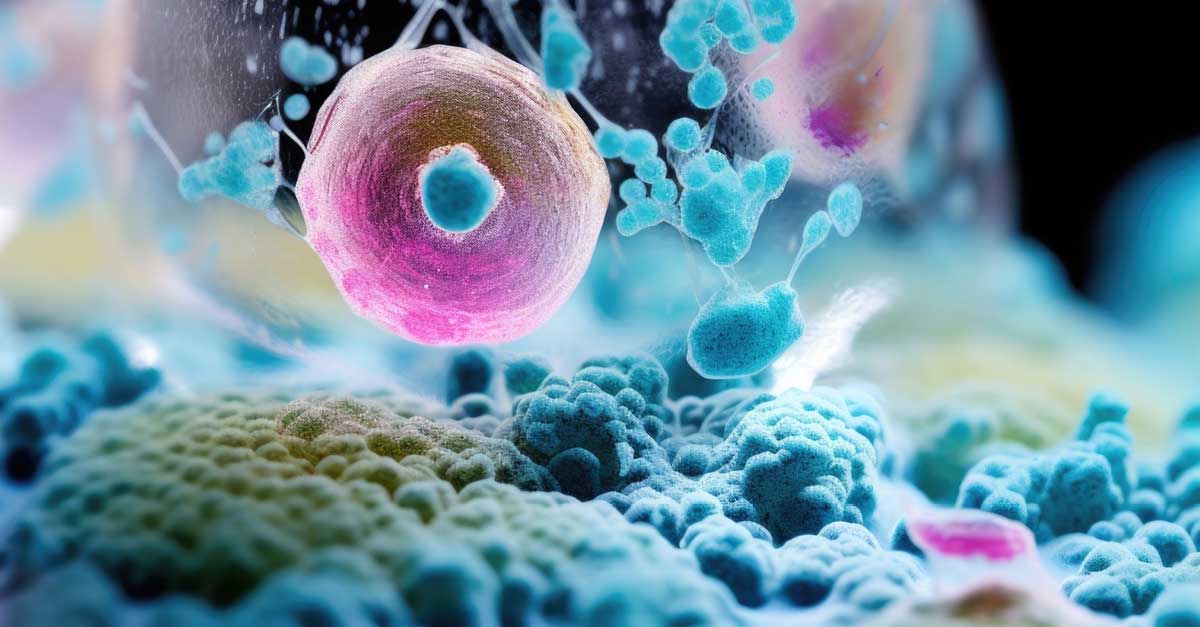LEARNING THE CANCER VOCABULARY

Cancer treatment has a language all its own. At CARTI, we want every patient to understand all aspects of their cancer journey – and that includes learning some of the common terms you might hear as part of your cancer care. This list provides simple definitions from the National Cancer Institute, and can be a helpful starting point for those who have been recently diagnosed or are providing support for a friend or family member. Of course, your CARTI team is always happy to explain unfamiliar terms and provide additional information every step of the way. If you aren’t sure of something, please ask.
- Benign Tumor: A growth that is not cancer. It does not invade nearby tissue or spread to other parts of the body.
- Biopsy: The removal of cells or tissues for examination by a pathologist. The pathologist may study the tissue under a microscope or perform other tests on the cells or tissue. There are many different types of biopsy procedures. The most common types include: (1) incisional biopsy, in which only a sample of tissue is removed; (2) excisional biopsy, in which an entire lump or suspicious area is removed; and (3) needle biopsy, in which a sample of tissue or fluid is removed with a needle. When a wide needle is used, the procedure is called a core biopsy. When a thin needle is used, the procedure is called a fine-needle aspiration biopsy.
- Chemotherapy (“chemo”): Treatment that uses drugs to stop the growth of cancer cells, either by killing the cells or by stopping them from dividing. Chemotherapy may be given by mouth, injection, or infusion, or on the skin, depending on the type and stage of the cancer being treated. It may be given alone or with other treatments, such as surgery, radiation therapy, or biologic therapy.
- Dosimetrist: A person who determines the proper radiation dose for treatment.
- Immunosuppression: Suppression of the body’s immune system and its ability to fight infections and other diseases. Immunosuppression may be deliberately induced with drugs, as in preparation for bone marrow or other organ transplantation, to prevent rejection of the donor tissue. It may also result from certain diseases such as AIDS or lymphoma or from anticancer drugs.
- Immunotherapy: A type of therapy that uses substances to stimulate or suppress the immune system to help the body fight cancer, infection, and other diseases. Some types of immunotherapy only target certain cells of the immune system. Others affect the immune system in a general way. Types of immunotherapy include cytokines, vaccines, bacillus Calmette-Guerin (BCG), and some monoclonal antibodies.
- In Situ: In its original place. For example, in carcinoma in situ, abnormal cells are found only in the place where they first formed. They have not spread.
- Malignant: A term used to describe cancer. Malignant cells grow in an uncontrolled way and can invade nearby tissues and spread to other parts of the body through the blood and lymph system.
- Mass: In medicine, a lump in the body. It may be caused by the abnormal growth of cells, a cyst, hormonal changes, or an immune reaction. A mass may be benign (not cancer) or malignant (cancer).
- Medical Oncologist: A doctor who has special training in diagnosing and treating cancer in adults using chemotherapy, hormonal therapy, biological therapy, and targeted therapy. A medical oncologist often is the main health care provider for someone who has cancer. A medical oncologist also gives supportive care and may coordinate treatment given by other specialists.
- Melanoma: A form of cancer that begins in melanocytes (cells that make the pigment melanin). It may begin in a mole (skin melanoma), but can also begin in other pigmented tissues, such as in the eye or in the intestines.
- Metastasis: The spread of cancer cells from the place where they first formed to another part of the body. In metastasis, cancer cells break away from the original (primary) tumor, travel through the blood or lymph system, and form a new tumor in other organs or tissues of the body. The new, metastatic tumor is the same type of cancer as the primary tumor. For example, if breast cancer spreads to the lung, the cancer cells in the lung are breast cancer cells, not lung cancer cells.
- Neoplasm: An abnormal mass of tissue that forms when cells grow and divide more than they should or do not die when they should. Neoplasms may be benign (not cancer) or malignant (cancer). Benign neoplasms may grow large but do not spread into, or invade, nearby tissues or other parts of the body. Malignant neoplasms can spread into, or invade, nearby tissues. They can also spread to other parts of the body through the blood and lymph systems. Also called tumor.
- Oncology: A branch of medicine that specializes in the diagnosis and treatment of cancer. It includes medical oncology (the use of chemotherapy, hormone therapy, and other drugs to treat cancer), radiation oncology (the use of radiation therapy to treat cancer), and surgical oncology (the use of surgery and other procedures to treat cancer).
- Palliative Care: Care given to improve the quality of life and help reduce pain in people who have a serious or life-threatening disease, such as cancer. The goal of palliative care is to prevent or treat, as early as possible, the symptoms of the disease and the side effects caused by treatment of the disease. It also attends to the psychological, social, and spiritual problems caused by the disease or its treatment. For cancer, palliative care may include therapies, such as surgery, radiation therapy, or chemotherapy, to remove, shrink, or slow the growth of a tumor that is causing pain. It may also include family and caregiver support. Palliative care may be given with other treatments from the time of diagnosis until the end of life.
- Polyp: A growth that protrudes from a mucous membrane.
- Precancerous: A term used to describe a condition that may (or is likely to) become cancer. Also called premalignant.
- Primary Cancer: A term used to describe the original, or first, tumor in the body. Cancer cells from a primary cancer may spread to other parts of the body and form new, or secondary, tumors. This is called metastasis. These secondary tumors are the same type of cancer as the primary cancer. Also called primary tumor.
- Prognosis: The likely outcome or course of a disease; the chance of recovery or recurrence.
- Radiation Oncologist: A doctor who has special training in using radiation to treat cancer.
- Regimen: A treatment plan that specifies the dosage, the schedule, and the duration of treatment.
- Remission: A decrease in or disappearance of signs and symptoms of cancer. In partial remission, some, but not all, signs and symptoms of cancer have disappeared. In complete remission, all signs and symptoms of cancer have disappeared, although cancer still may be in the body.
- Secondary Cancer: A term used to describe cancer that has spread (metastasized) from the place where it first started to another part of the body. Secondary cancers are the same type of cancer as the original (primary) cancer. For example, cancer cells may spread from the breast (primary cancer) to form new tumors in the lung (secondary cancer). The cancer cells in the lung are just like the ones in the breast. Also called secondary tumor.
- Stage: The extent of a cancer in the body. Staging is usually based on the size of the tumor, whether lymph nodes contain cancer, and whether the cancer has spread from the original site to other parts of the body.
- Tumor: An abnormal mass of tissue that forms when cells grow and divide more than they should or do not die when they should. Tumors may be benign (not cancer) or malignant (cancer). Benign tumors may grow large but do not spread into, or invade, nearby tissues or other parts of the body. Malignant tumors can spread into, or invade, nearby tissues. They can also spread to other parts of the body through the blood and lymph systems. Also called neoplasm.





